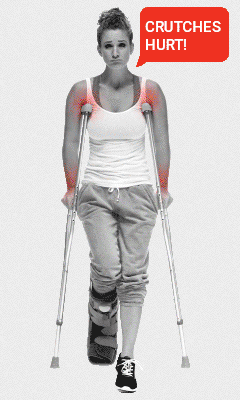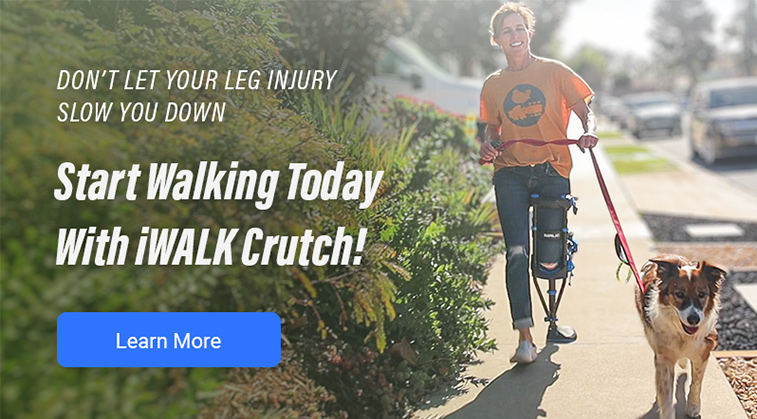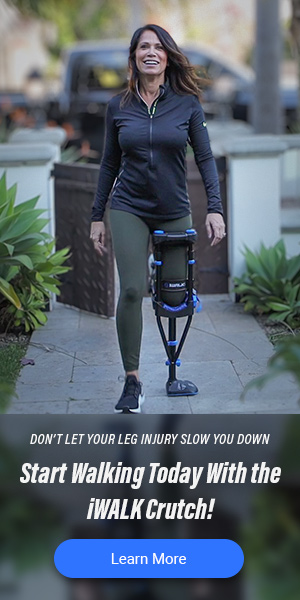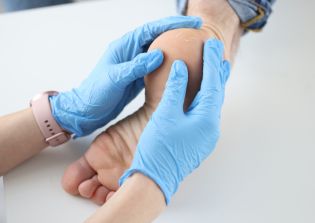Lower Leg Injury Resource Center
Brooken Heel
Causes, Surgery, Recovery & Post-Surgery Mobility
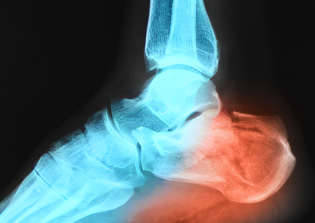
A “broken heel” typically refers to a fracture in one of the bones that make up the heel, often the calcaneus bone. Here’s some common information about a broken heel, including symptoms, causes, surgery, recovery, treatments, and frequently asked questions.
If you’re at risk, it’s important to take steps to prevent a broken heel, and you should seek medical help as soon as possible if you notice symptoms.
I
WHAT IS A BROKEN HEEL?
A broken heel, often referred to as a calcaneus fracture, is a significant injury involving the calcaneus bone, which forms the base of the heel. This type of injury can be quite painful and should be promptly evaluated by a medical professional for appropriate treatment. Attempting to walk on a broken heel can exacerbate the injury, making early medical intervention crucial.
The calcaneus bone is integral to the structural integrity of the foot, and a fracture in this area can lead to discomfort, swelling, and mobility issues. The specific treatment approach for a broken heel depends on factors such as the type and severity of the fracture, and the chosen treatment method can range from conservative measures to surgical intervention. Recovery from a broken heel typically involves a period of immobilization and rehabilitation, which can extend over six to 10 weeks, though the duration may vary based on the individual case.
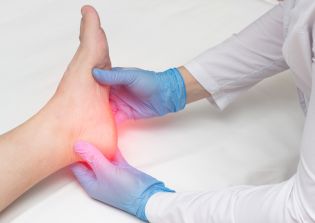
I
WHAT CAUSES A BROKEN HEEL?
A broken heel, can result from various causes. Traumatic injuries, such as falls from a height, car accidents, or other significant impacts to the heel, are common culprits. Similarly, participation in high-impact sports or activities, especially those involving jumping or landing on the feet, can elevate the risk of heel fractures. Weakened bones due to conditions like osteoporosis can make the calcaneus and other bones more susceptible to fractures, even with lower levels of force or trauma. Overuse and stress fractures can occur when there is repeated stress and strain on the heel, often seen in long-distance running or activities involving repetitive heel strikes.
Certain occupations that entail heavy lifting, prolonged standing, or potential for heavy objects to fall on the feet may also increase the risk of heel fractures. While calcaneus fractures are not as common as some other types of fractures, they can have significant consequences for mobility and comfort when they do occur. If you suspect a broken heel, seeking immediate medical attention for proper evaluation and treatment is crucial.
I
SYMPTOMS AND DIAGNOSIS OF A BROKEN HEEL
The symptoms of a broken heel, often a fracture of the calcaneus bone, are characterized by several distinctive indicators. Patients typically experience severe pain localized to the heel area, along with significant swelling and bruising around the heel and ankle. One of the primary symptoms is an inability to bear weight on the affected foot, causing discomfort and instability. In some cases, there may be a noticeable deformity of the heel, especially if the fracture involves a displacement of bone fragments. The heel area may also be tender to the touch, and patients may recall hearing or feeling a cracking or popping sensation at the time of injury. Based on these symptoms, healthcare providers can make an initial clinical diagnosis.
Diagnosing a Broken Heel
In order to confirm the diagnosis and assess the type and extent of the fracture, diagnostic imaging is typically necessary. X-rays are the most commonly used method, allowing healthcare professionals to visualize the fracture and assess its severity. Additional imaging, such as a CT scan, may be required in certain cases to provide more detailed information. An accurate diagnosis is crucial for determining the most appropriate treatment plan, whether it involves non-surgical methods or surgical intervention, to promote optimal healing and recovery. If a broken heel is suspected based on these symptoms, seeking prompt medical attention for a comprehensive evaluation and diagnosis is essential.
I
TREATMENT FOR A BROKEN HEEL?
The optimal treatment for a broken heel, typically a calcaneus fracture, depends on the severity and type of the fracture. Here are the primary treatment options:
Non-Surgical Treatment:
- Immobilization: For less severe or non-displaced calcaneus fractures, non-surgical approaches are often considered. This treatment involves immobilizing the affected foot to promote proper healing. Patients may be placed in a cast, splint, or walking boot, which helps stabilize the heel and prevent further damage.
- Rest and Elevation: Elevating the injured foot and keeping it at rest are essential components of the healing process. Elevating the foot can help reduce swelling, while rest aids in preventing further stress on the fractured heel.
- Weight-Bearing Restrictions: Patients with broken heels are frequently advised to avoid putting weight on the injured foot for a specified period. Crutches or a wheelchair may be necessary to assist with mobility during this time.
- Pain Management: Pain medications, either over-the-counter or prescription, may be recommended to alleviate the pain and discomfort associated with a broken heel.
Broken Heel Surgical Treatment:
- Open Reduction and Internal Fixation (ORIF): In cases of more severe or displaced calcaneus fractures, surgical intervention may be the preferred course of action. During an ORIF procedure, a surgeon realigns the fractured bone fragments and uses screws, plates, or pins to secure them in place. This surgical method provides stability to the fracture and aids in the proper healing of the heel.
- Closed Reduction: Some fractures can be treated with a closed reduction procedure, which involves manipulating and realigning the bone fragments without the need for extensive incisions. After the realignment, the foot may be placed in a cast or brace to maintain stability and promote healing.
Rehabilitation and Physical Therapy
Rehabilitation and physical therapy are critical components of recovery from a broken heel. These therapies help patients regain strength and mobility in the affected foot and ankle. A physical therapist designs a customized rehabilitation program to address the individual needs of the patient, typically initiating the process after the initial period of immobilization or post-surgery. The duration of rehabilitation can range from several weeks to several months and is tailored to the patient’s specific case.
The choice of treatment—whether non-surgical or surgical—and the specific plan are determined by healthcare professionals based on the unique characteristics of the fracture. It is essential to seek immediate medical attention for a proper evaluation and diagnosis to ensure the most suitable treatment and promote optimal healing and recovery for a broken heel.
I
WALKING AFTER A BROKEN HEEL
Recovery from a broken heel, involves initial immobilization with a cast or walking boot and adhering to weight-bearing restrictions. Pain management may be necessary, and physical therapy plays a pivotal role in restoring strength and mobility. Follow-up appointments are essential to monitor progress.
The duration of recovery can vary but typically ranges from several weeks to months. Gradual return to normal activities is guided by the healthcare provider, depending on the fracture type and individual progress. Patience and adherence to the treatment plan are vital for a successful recovery.
During this period, you’ll need to use a mobility device to help you get around, and there are a number of options.
Traditional Crutches
Traditional underarm crutches are the most common mobility device for people recovering from ankle fusion surgery. Traditional crutches are relatively cheap and lightweight, but can also be frustrating. They require the full attention of your hands and arms, which makes simple activities like cooking breakfast or taking out the trash exhausting or impossible. What’s more, many people find that traditional crutches hurt their hands, forearms and wrists.
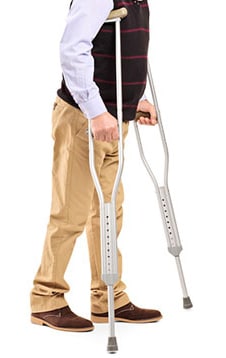
Knee Scooters or Knee Walkers
Knee scooters, also called knee walkers, can be helpful during recovery. They look like a child’s scooter but are carefully engineered to protect your injured leg while you move around on wheels with a padded platform and a handlebar.
Knee scooters can be used in a variety of circumstances and are a great alternative to crutches, but they have obvious limitations. They can’t be used on uneven ground or stairs and are bulky, which makes them challenging to transport. Knee scooters also require use of your hands, which makes it impossible to carry anything while using them.
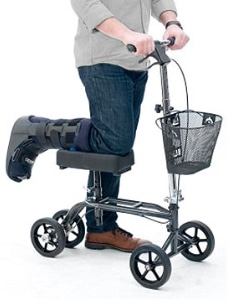
iWALK Hands-Free Crutch
The iWALK hands-free crutch is a medically-approved, award-wining mobility device that solves the shortcomings of traditional crutches and knee scooters.
The iWALK is a lightweight device that can be used by the majority of people with lower leg injuries. It functions like a prosthetic leg and enables people recovering from foot, ankle and lower leg injuries to walk freely and unaided. This restores freedom and mobility, which has physical and psychological benefits during recovery. Recent clinical research showed that 86 percent of non-weight bearing patients preferred the hands-free crutch over other mobility devices. Moreover, cutting edge medical studies show the iWALK boosts blood-flow, reduces muscle atrophy and may accelerate healing.
Most people learn to use the iWALK quickly and, with practice, can put it on and remove it in seconds. Using the hands-free crutch, you’ll be able to continue living your life while you recover. You can go to work, walk the dog, look after your kids and even go to the gym.
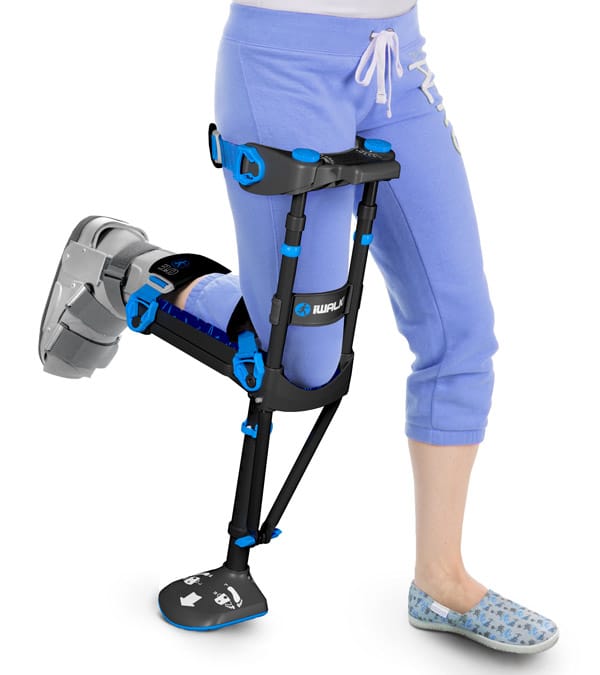
I
BROKEN HEEL FAQs
Can a broken heel heal on its own?
In some cases, particularly for non-displaced fractures, a broken heel may heal with immobilization and rest. Non-displaced fractures mean that the bone fragments have not significantly shifted out of their normal alignment. In such cases, a healthcare provider may recommend conservative treatment, which involves wearing a cast, splint, or walking boot to stabilize the heel and allowing it time to heal naturally. However, it’s important to note that the healing process may still require several weeks to months, and not all fractures can heal effectively without medical intervention. It’s crucial to consult with a healthcare professional to determine the most appropriate treatment approach.
How long does it take to recover from a broken heel?
The duration of recovery from a broken heel varies widely and depends on several factors, including the severity of the fracture and the chosen treatment method. Recovery times can range from a few weeks to several months. Less severe fractures that are well-aligned and treated non-surgically may have shorter recovery periods. In contrast, more complex fractures that require surgery and extensive rehabilitation can take longer. Additionally, individual factors, such as overall health and adherence to treatment and physical therapy, can impact the recovery timeline. Follow-up appointments with a healthcare provider are crucial to monitor progress and adjust the treatment plan as needed.
Can you walk on a broken heel?
Whether you can walk on a broken heel depends on the severity of the fracture and the treatment received. In cases of less severe fractures that are well-aligned and treated with a cast or walking boot, some individuals may be allowed to bear partial weight on the affected foot with assistance, such as crutches or a walker. However, for more complex or displaced fractures, patients are often advised to avoid putting any weight on the injured foot, necessitating complete non-weight-bearing. The decision is made by a healthcare provider based on the specific characteristics of the fracture. Attempting to walk on a broken heel without proper guidance can lead to further damage and complications.
Will I fully regain mobility after a broken heel?
Most individuals can regain mobility and return to their normal activities after a broken heel with the appropriate treatment and rehabilitation. Physical therapy plays a vital role in the recovery process, helping restore strength, flexibility, and function in the affected foot and ankle. However, the extent to which mobility is regained can vary depending on the severity and type of fracture, as well as individual factors. Some individuals may experience complete restoration of mobility, while others may have residual limitations. It’s important to follow the treatment plan recommended by healthcare professionals and actively participate in physical therapy to maximize the chances of regaining full mobility and function.
The information above is intended for informational purposes only and is not intended to prevent, treat, or diagnose any illness or disease. We aim to provide the highest quality information, so if you have any questions on the information above, we welcome your feedback!
I
RESOURCES
Broken heel (calcaneus fracture). FootCareMD. (n.d.). https://www.footcaremd.org/conditions-treatments/heel/broken-heel
Calcaneus (heel bone) fractures – orthoinfo – aaos. OrthoInfo. (n.d.). https://orthoinfo.aaos.org/en/diseases–conditions/calcaneus-heel-bone-fractures/
DPT, B. P. (2022, September 10). Calcaneal Fracture treatment – exercises, faqs, case. Motion Physical Therapy & Rehab. https://motionptr.com/blog/calcaneal-heel-fracture-rehab-exercises-w-videos/
Golden, M. (2020, November 4). Heel bone fracture – treatment options. OrthoIndy Blog. https://blog.orthoindy.com/2019/05/17/how-do-you-treat-a-fractured-heel-bone-calcaneus-fracture/

